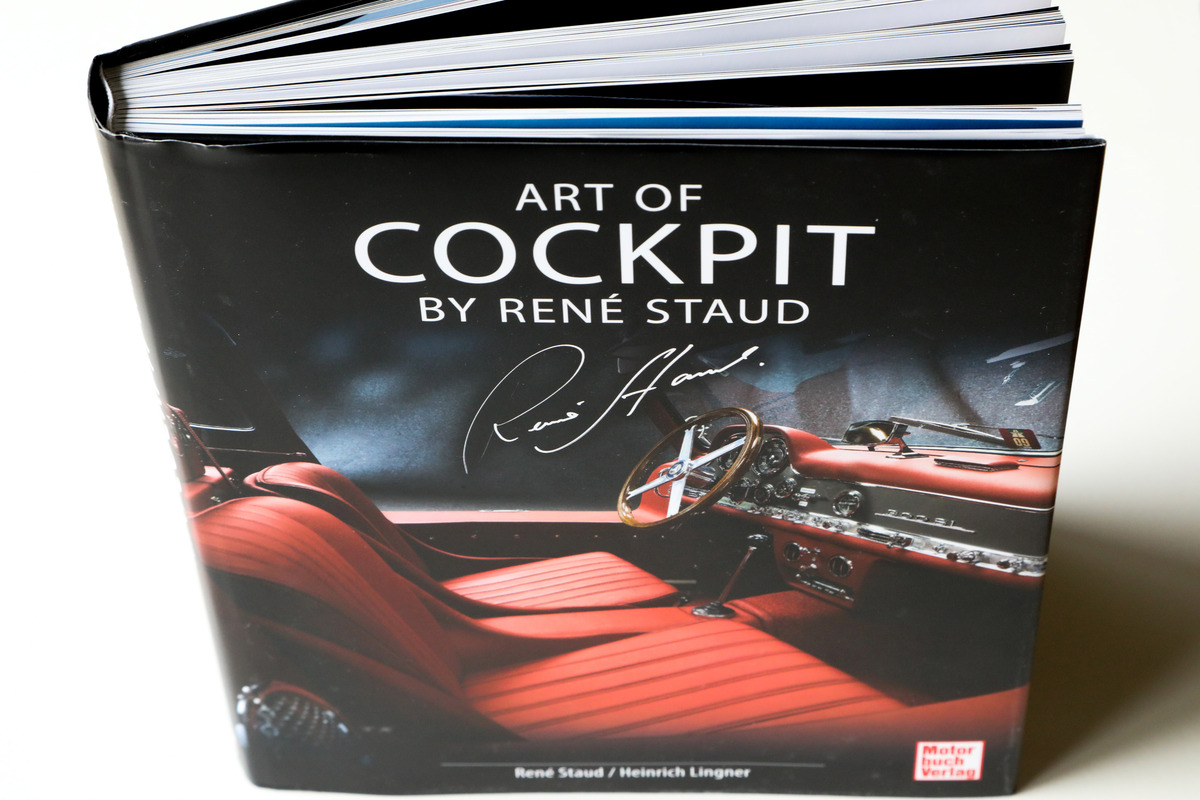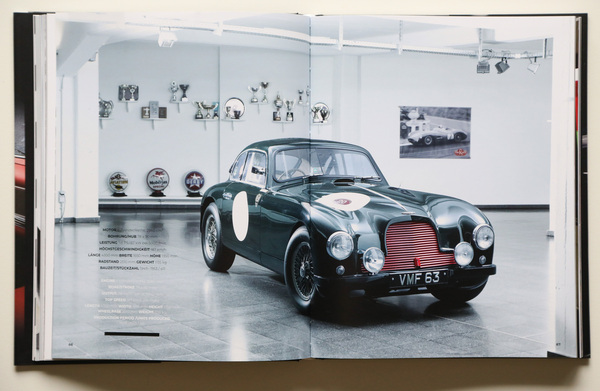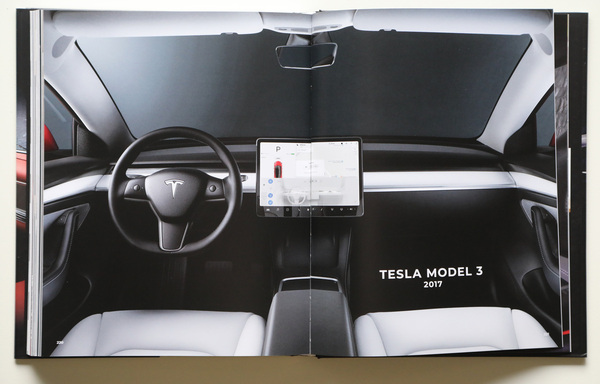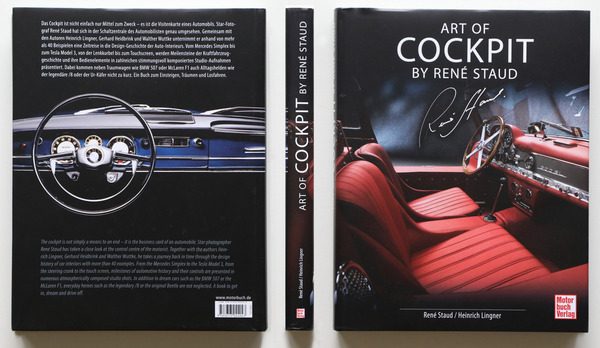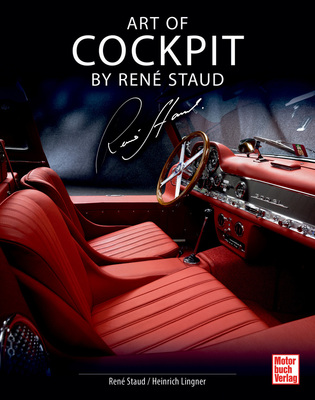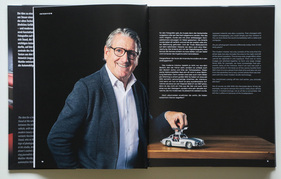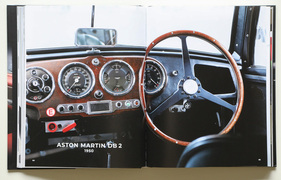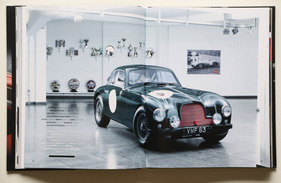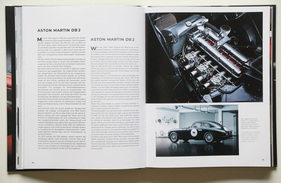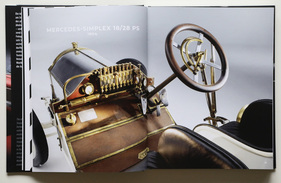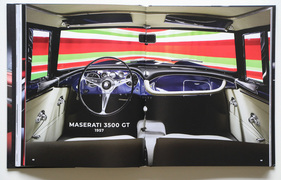In most illustrated books about classic cars, the focus is on the shape of the bodywork and the elegance of the lines. The interior is often somewhat neglected, although there are often at least as many exciting perspectives here as on the exterior. In this respect, a book like "Art of Cockpit" by René Staud seemed long overdue. At last, someone is devoting himself to the inside of the great style icons on four wheels, from the Simplex to the Tesla.

You read the title and look forward to playful instrument graphics, unusual pointer shapes, abstract wood grains, artistic metal polishing and other interesting material structures.
75 percent less cockpit per cockpit
However, it is noticeable from the very first flick through for a quick first impression: For a book about cockpits, it contains surprisingly few cockpits. Often only one in four pictures of a car shows the interior. The others are exterior views or engine details. Only occasionally is a second photo of the interior shown. The very first car in the book even has no picture of the cockpit at all - because the car doesn't really have one. In the Benz Patent Motor Car, there is nothing more than a crank handle in front of the driver for steering.
In this respect, readers should forgive the lack of a cockpit here. However, Staud (or his editor) could have been a little more consistent with all subsequent models. In most cases, the interior of a classic car offers more than just a photogenic perspective and more than just one interesting detail that can be highlighted.

That's why three or four different shots of the same interior wouldn't have been too much - in fact, it would have been desirable for this book title. After all, we know what the Jaguar E-Type and Citroën DS look like from the outside.
The DS in particular could have served as a wonderful illustration of how the style of the dashboard has changed over the course of time. From the jagged light gray sculpture to the more or less mass-produced black plastic part with round instruments, no other car's cockpit has changed so much during its production period. Staud opted for a convertible from 1965 and thus the middle of the three DS dashboards. However, the car is labeled as being built in 1961, which leads us straight to the next point of criticism in the book.
General texts
Like every illustrated book about old cars, "Art of Cockpit" must also have a rudimentary data box containing basic information such as engine power, top speed and number of units. However, the last point was a little inconsistent: for the Mercedes-Benz 300 SL, only the number of coupés is given, for the DS Cabrio that of the entire model series with ID and Break - and for the Mercedes-Benz 220 D "Stroke Eight" a strange average value, because the long versions were forgotten.
Couldn't the data box - if you absolutely had to have one - have been modified to suit the theme? For example, with manufacturer and number of instruments, dashboard material, steering wheel diameter and maximum value for speedometer and rev counter? That would certainly have meant a little more research, but it would have been an imaginative variation on the usual form and, above all, a nice little collection of funny, useless island knowledge that you won't find in any other book.
The bilingual accompanying texts by Heinrich Lingner also only refer to the cockpit in the last paragraph at most and otherwise reproduce what you can read in any other book: the general history of the respective car without any particular wit or new insights. Yet so much more could have been made of the cockpit topic here too: for example, explaining why the Mercedes-Benz 300 SL had a second horn button for the passenger. Instead, there are a lot of platitudes, especially in the captions. One example: "The dashboard of the Jaguar Mark 2 conveys sportiness and luxury." That's right, isn't it? Maybe, but unfortunately the book didn't say "Jaguar Mark 2", but "300 SL".
Mostly successful photos
Nevertheless, the photos are taken in Staud's usual studio style and are for the most part of very good quality. Whether you like this style is up to you to decide. Occasionally, however, there are small downward slips. The picture of the VW Beetle cockpit in particular looks like a blurred snapshot. In the Ferrari 365 GTC/4, the instruments - and thus a not insignificant part of the cockpit - are completely lost in a black hole. And the McLaren F1 was simply snapped from the outside through the open door, so that not even the unusual positioning of the steering wheel comes into its own.

The photos of the Maybach Zeppelin DS8, Mercedes-Benz 300 SL, BMW 507, Maserati 3500 GT, Aston Martin DB 6, Porsche Carrera RS, Bugatti EB 16.4 and a few others show how well a book about the aesthetics of interiors can work if the illustrations are right. And above all, if the selection of cars is right.

From the point of view of a car lover who is not fixated on high-priced classics, however, it is a shame that "cheap" designer pieces such as the Fiat Multipla, Studebaker Avanti or Lancia Trevi did not make it into the selection. Because even if the shape of their bodies is polarizing: Their cockpit sculptures would have fitted wonderfully into a book on the art of the dashboard.
Conclusion
Unfortunately, "Art of Cockpit" does not make full use of the potential promised by the title. In principle, the book is no different from other modern illustrated books that have such wonderful titles as "The greatest automotive icons in automobile history" and the like. The only thing that distinguishes "Art of Cockpit" from them is the opening image of each photo series: in other books it is an exterior view, here it is an interior view. In terms of vehicle selection, text content, language style and, unfortunately, thematic focus, it does not.
However, anyone who enjoys looking at beautiful photos of attractive cars and appreciates the interior as a relevant perspective will definitely enjoy the new book from the Staud kitchen.

Bibliographic information
- Title: Art of Cockpit
- Authors: René Staud / Heinrich Lingner
- Languages: German/English
- Publisher: Motorbuch Verlag
- Edition: 1st edition December 2022
- Format: Hardcover, with dust jacket, 240 x 305 mm
- Scope: 240 pages, 200 pictures
- ISBN: 978-3-613-04404-3
- Price: EUR 79.00
- Buy/order: Online at amazon.de, online at Motorbuch Verlag or in relevant bookstores
